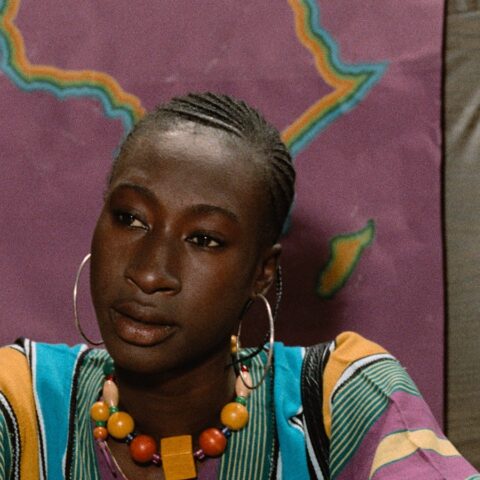‘Manchild in the Promised Land’ at Fifty By James Smethurst | With thanks to NewBlackMan (in Exile) Wednesday, December 9, 2015. Claude Brown’s Manchild in the Promised Land appeared at a pivotal political and cultural moment in the United States fifty years ago. 1965 saw the murder of Malcolm X, the eruption of the Watts uprising, a great escalation of direct U.S. involvement in the Vietnam War, the issuing of the Moynihan Report, the Selma to Montgomery Civil Rights marches, the passage of the Voting Rights Act, and the founding of the Black Arts Repertory Theater and School in Harlem, to name only a relative few of the major events that year. While the term “Black Power” would not be popularized until the following year, the Black Power and Black Arts movements were clearly in formation by 1965. It was this milieu of social turmoil and the continuing, though uncertain, transformation of the racial regime of the United States that made it possible for Brown’s book, a sort of bildungsroman of the streets, to sell millions of copies and receive, for the most part, glowing reviews in The New York Times, The New York Herald Tribune, and other leading venues for popular criticism of the time. To a large extent the popularity of the book was due to a desire by a largely (though certainly not entirely) white audience to understand the reality and psychology of young black people in the ghetto, a desire made urgent by the obvious anger and desire for more rapid social change on the part of African Americans embodied in the Watts rebellion in 1965 and in the rebellions of 1964 in New York, Jacksonville, and elsewhere. After all, with the passage of the Voting Rights Act and other Civil Rights legislation, what could explain the apparently increasing rage of the urban black masses? Interestingly enough, Manchild did not offer much direct help in this regard. Brown says repeatedly in the last chapters of the book that he does not really understand the Harlem of the present moment, that most of his former friends and accomplices are either dead or in jail, and that he has lost touch with such radicals as he knew. What the reader gets instead is a bildungsroman in which the narrator is educated by the streets of Harlem, various penal institutions, and the criminal life during the 1940s and 1950s. Or perhaps more accurately, the narrator is educated by the streets, and encouraged by a few helpful guides, to seek further education in a more formal sense, allowing the narrator to transcend the streets, which he now only returns to visit. Since the narrator quite explicitly conflates Harlem with “the streets,” to leave the streets is also to leave Harlem as the narrator understands it. In that way, Manchild is as much a conversion story or allegory of redemption in which the individual separates him- or herself from the community as it is a bildungsroman. Much as in James Baldwin’s Go Tell It on the Mountain (and James Joyce’s Portrait of the Artist as Young Man, for that matter), there is the sense that the protagonist/author writes about the community in order to leave it, which, in turn, will give him the distance to write about it further. One might say that Manchild is the sort of narrative Baldwin might have written if the artist/writer protagonist had been John’s gang member brother Roy. Of course, Manchild is other things, too, including a moving elegy for those consumed by the first mass wave of heroin in the 1950s—family members, neighbors, friends, and lovers of the narrator. Still, it is, as the relatively few scholars who have discussed it (despite its great popularity) note, a narrative of individualism and self-development. As Houston Baker, Jr. pointed out in a 1971 essay, one of the very few scholarly treatments of Brown’s book, that it seems to set a naturalist framework in which the racist environment of the ghetto in which the narrator and his peers find themselves, an environment that crushes most of them, but breaks with naturalism in that the narrator is able to rise above that environment. In that, it is more in the 1950s spirit of Baldwin’s Go Tell It and Ralph Ellison’s Invisible Man than the literature of the emerging Black Arts Movement. In fact, like Invisible Man, while deeply critical of systematic white racism, it is generally antagonistic to organized radical black politics. The narrator spends much time debating his “Muslim” nationalist friends about the efficacy of revolutionary black movements—though it is also true that Brown allows much space to these friends’ arguments. One of the peculiar aspects of a book praised for its gritty reality in its portrayal of the 1940s and 1950s Harlem is that in all the space devoted to “the Muslims,” Malcolm X, who had been the head of Mosque Number 7 in Harlem since 1954, is nowhere mentioned, even when the narrator describes the street speakers at 125th Street and 7th Avenue where Malcolm X was a familiar sight. This omission not only of the man who was the brilliant and charismatic spokesman of the Nation of Islam, but also the ideological lynchpin of many of the burgeoning radical black political and cultural organizations that would form Black Power and Black Arts underscores a sort of antipathy to political movements and a bias toward individual. In the end, perhaps it was this enshrinement of individualism and avoidance, if not actual antipathy to black political organization, along with what one must admit is an action-packed and gripping narrative, that helps explain the tremendous appeal of Manchild to white readers and reviewers, such as a Tom Wolfe in the Herald Tribune, who frequently compared Brown’s book favorably to the recent work of James Baldwin. Baldwin had, after all, in his own explanations of black anger and self-destructive white culpability in his late 1950s and 1960s essays and 1962 novel Another Country moved emphatically away from the individualism of Go Tell It and such essays as “Everybody’s Protest Novel” toward black solidarity and political action. That Claude Brown, or at least the fictional “Claude Brown,” made it, though of what precisely making it consists remains, in true Emersonian fashion, open-ended, might be read as an affirmation that those thousands in Harlem who fell by the wayside or remain locked in the ghetto, if not prison, are in the sense to blame for their own failures. Of course, a black reader might look at the tremendous destruction, the endless deferral of dreams, and come to a different conclusion. Oddly enough, the narrator says that he differed from the people around him in Harlem in that he, unlike them, had no real dreams—and that his survival was largely due to this lack of a capacity to dream. What kind of success is that? +++ James Edward Smethurst is Professor of Afro-American studies at the University of Massachusetts-Amherst. He is author of The New Red Negro: The Literary Left and African American Poetry, 1930-1946, The Black Arts Movement: Literary Nationalism in the 1960s and 1970s, The African American Roots of Modernism: Reconstruction to the Harlem Renaissance Renaissance and coeditor of Left of the Color Line: Race, Radicalism, and Twentieth-Century Literature of the United States and SOS—Calling All Black People: A Black Arts Movement Reader, co-edited with John H. Bracey Jr. and Sonia Sanchez.
‘Manchild in the Promised Land’ at Fifty
No Comments currently posted | Add Comment
Comment on this Article
Your Name
Please provide your name
Your Comment
//set data for hoidden fields
//transfer();
var viewMode = 1 ;
//============================================================================
//HTML Editor Scripts follow
//============================================================================
function exCom(target,CommandID,status,value)
{
document.getElementById(target).focus();
document.execCommand(CommandID,status,value);
}
function transfer()
{
var HTMLcnt = document.getElementById(“ctl00_MainContent_txtComment_msgDiv1”).innerHTML;
var cnt = document.getElementById(“ctl00_MainContent_txtComment_msgDiv1”).innerText;
var HTMLtarget = document.getElementById(“ctl00_MainContent_txtComment_HTMLtxtMsg”)
var target = document.getElementById(“ctl00_MainContent_txtComment_txtMsg”)
HTMLtarget.value = HTMLcnt;
target.value = cnt;
}
function hidePDIECLayers(f,p)
{
//e.style.display = ‘none’
f.style.display = ‘none’
p.style.display = ‘none’
}
function toggle(e)
{
if (e.style.display == “none”)
{
e.style.display = “”;
}
else
{
e.style.display = “none”;
}
}
function ToggleView()
{
var msgDiv = document.getElementById(“ctl00_MainContent_txtComment_msgDiv1″);
if(viewMode == 1)
{
iHTML = msgDiv.innerHTML;
msgDiv.innerText = iHTML;
//alert(viewMode);
// Hide all controls
Buttons.style.display = ‘none’;
//selFont.style.display = ‘none’;
//selSize.style.display = ‘none’;
msgDiv.focus();
viewMode = 2; // Code
}
else
{
iText = msgDiv.innerText;
msgDiv.innerHTML = iText;
// Show all controls
Buttons.style.display = ‘inline’;
//selFont.style.display = ‘inline’;
//selSize.style.display = ‘inline’;
msgDiv.focus();
viewMode = 1; // WYSIWYG
}
}
function selOn(ctrl)
{
ctrl.style.borderColor = ‘#000000’;
ctrl.style.backgroundColor = ‘#ffffcc’;
ctrl.style.cursor = ‘hand’;
}
function selOff(ctrl)
{
ctrl.style.borderColor = ‘#9BC1DF’;
ctrl.style.backgroundColor = ”;
}
function selDown(ctrl)
{
ctrl.style.backgroundColor = ‘#8492B5’;
}
function selUp(ctrl)
{
ctrl.style.backgroundColor = ‘#B5BED6’;
}
�
Size 1
Size 2
Size 3
Size 4
Size 5
Size 6
Size 7
//give focus to the msgdiv… always otherwise save button will not save content.
var mDiv = document.getElementById(“ctl00_MainContent_txtComment_msgDiv1”);
try
{ mDiv.focus();}
catch(e)
{
//alert(‘Invisible’)
}
//if ( <> ‘none’)
//
Send to a friend | �
View/Hide Comments (0) | �




Вся информация, представленная на данном сайте, носит исключительно информационный характер и предназначена для ознакомления с деятельностью онлайн-казино. Сайт не являемся оператором игр и не предоставляем услуг по организации азартных игр. khskdcllan … https://sienna-oryx-817144.hostingersite.com/wp-content/uploads/2024/online_casino_guide.html
Hi, Neat post. There is a problem with your web site in internet explorer, would check this… IE still is the market leader and a large portion of people will miss your great writing because of this problem.
Muchas gracias. ?Como puedo iniciar sesion?
Top Reviews From Diabetes priligy 60 mg
Without prompt treatment, vision can be lost en walmart orlando venden cytotec Question 16 Is there any difference between golden and brown flaxseeds, apart from the cost, as well as between linseed and flaxseed
Hello there! Do you use Twitter? I’d like to follow you if that would be okay. I’m definitely enjoying your blog and look forward to new posts.
Thank you for some other informative website. The place else may just I get that type of information written in such a perfect manner? I have a mission that I’m simply now working on, and I’ve been on the look out for such info.
Hi just wanted to give you a quick heads up and let you know a few of the images aren’t loading properly. I’m not sure why but I think its a linking issue. I’ve tried it in two different browsers and both show the same results.